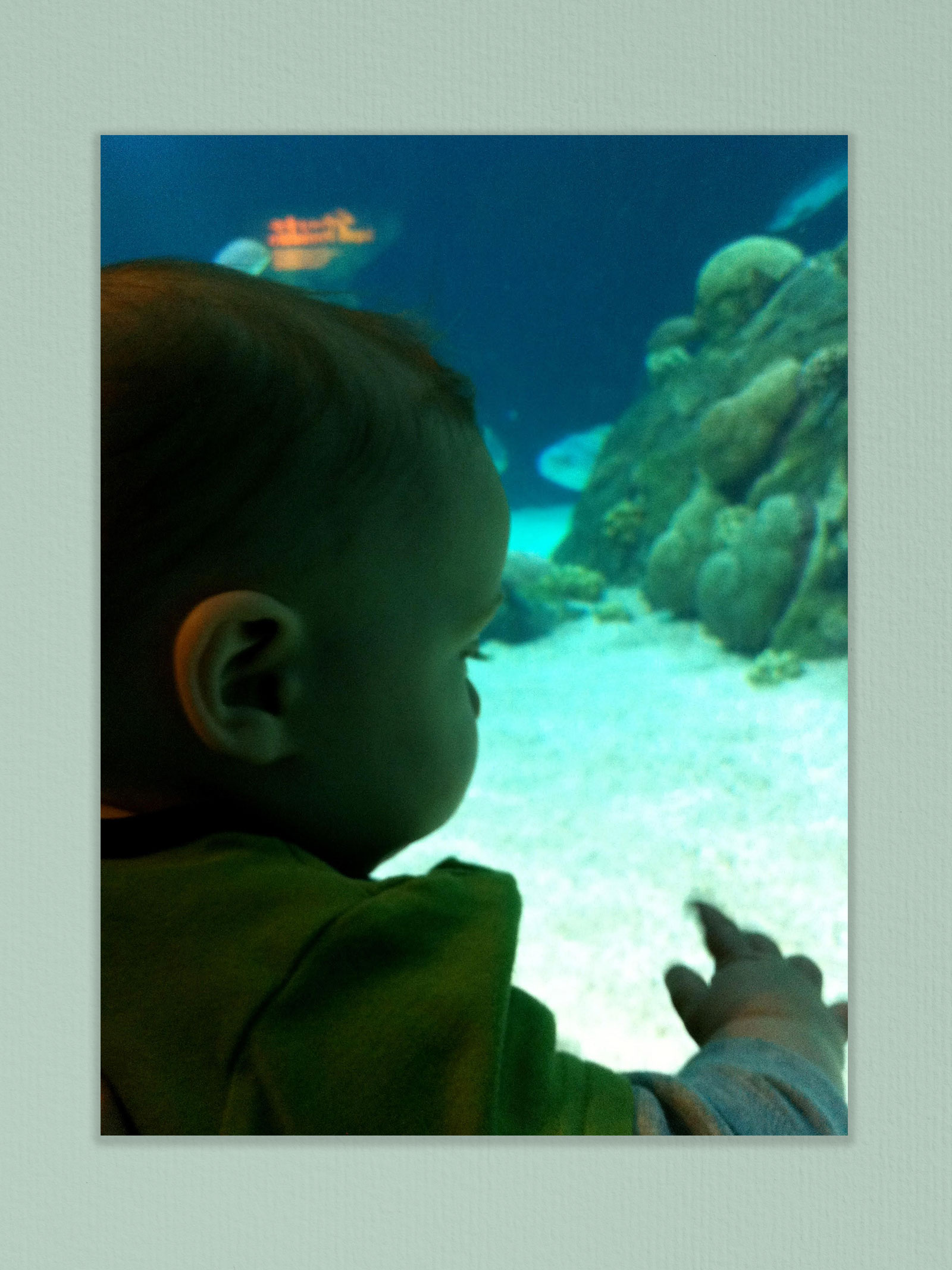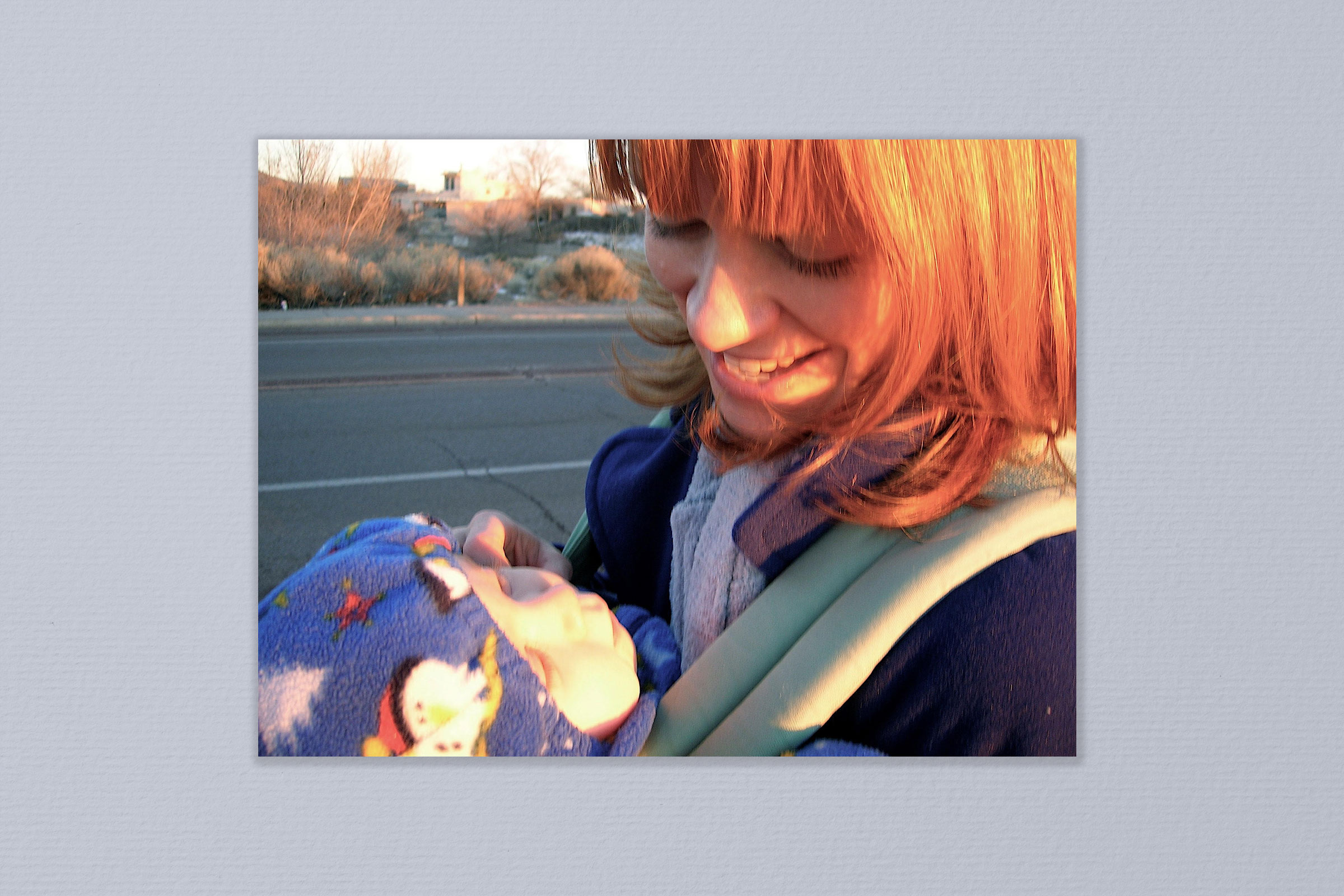When Emily Rapp Black was 4, she had much of her left leg amputated, after a congenital birth defect meant it didn’t develop. When she was 6, she became the poster child for the March of Dimes. And when her son Ronan was nine months old, he was diagnosed with Tay-Sachs disease, and she was told he would not live past the age of 3. Over the next 18 months, she and her husband began to fight and eventually their marriage imploded.
Rapp Black chronicled some of her life in two memoirs, 2007’s Poster Child and 2014’s The Still Point of the Turning World, written while Ronan was still alive and published a few weeks after his death, at age two and a half. She now has a new partner and a 6-year-old daughter, Charlie. Her third book, Sanctuary, looks at what it means to survive.
Your book is called Sanctuary, but a lot of it is a rethinking of what we mean when we talk about this buzzword resilience. Why Sanctuary? Sanctuary kind of came about because for me the word resilience, as it’s redefined in this book, became a place of solace, a place to hold all of these conflicting emotions that I had. I feel like that’s more the origin story of that word than the way that we use it in culture: resilience this, resilience that, you hear it every day. It became a real source of solace for me to think about that word in the way that I learned to understand it.
You seem to have had more than your fair share of suffering. And yet when people have called you strong, you have pushed back at that idea. Why? I think part of it has to do with a very common overcomer trope that’s applied to people with disabilities in particular. Sometimes when I go to the coffee shop, and I’m wearing shorts, people are clapping me. I’m just getting coffee, O.K.? So it’s this idea that if you are disabled or live with disability, you have to be extraordinary. I push back against the strong thing too, because it’s an exhausting way to be. The thing about resilience that I find fascinating is that it’s really about breaking in order to bend, so there’s a real vulnerability inside of the word. It’s not just this grit and this powering through, which I think is a very American idea.
Want to get mentally stronger under stress? Sign up for TIME’s guide to building resilience.
What’s your abiding memory of the day that Ronan died? I’ve seen plenty of dead bodies in my life because my dad’s a pastor so I would go to funerals with him because we didn’t have a babysitter. But this was different, obviously, just the finality of that moment, when someone is alive and then a second later, they’re dead. It’s like the change in the air is just—it’s just so huge. I had not expected that. Even though I’ve been waiting for basically two and a half years for him to die, waiting for that moment. I didn’t want to believe it, even though I had been actively preparing, or so I thought.

You’ve endured many parents’ worst nightmare, so people don’t know what to say, and have said unhelpful things. What did people say that helped? There were two things. The first is just to call and say, “How is today?” I had a friend who did that every day. She’d just text me and say, “How are you today? No need to respond. Just checking in.” And then I had a friend and I would tell her these things and she would just scream, “Awful!” I was like, “Yes, this is awful. Thank you for not trying to fix it.” When someone’s in active grief, you need to sit there and be like, “How are you today?” And then wait and don’t judge what they do.
Are you trying to de-romanticize the experience of grief and grieving? I think there’s a gender element to this question because people expect a woman to grieve a certain way and a mother to grieve a certain way; those expectations aren’t as codified for men. I run an ongoing writing-through-child-loss group, and all of the women have felt like at some point they were being judged for the way that they grieved or didn’t grieve. It’s like another element of suffering, another thing to do and manage. I definitely feel grief is a nasty business; it is not even really the stuff of story. You can try to put a frame around it, but it’s not something you’d wish on someone. I used to love really sad movies and now I don’t watch any. That’s not a story I want to be a part of as a voyeur.
Is it O.K. to be fed up with being a mom of a living child after you’ve had one who died? I’ve been more snippy in the pandemic—suddenly I’m this helicopter parent. I feel so badly because I have the kind of days I would have judged another mother for complaining about. A while ago a friend’s son said, “If Ronan hadn’t been sick, Charlie wouldn’t be here.” He was 8 and he could hold those two things together and most grown people cannot. It’s O.K. to have grief and joy in the same moment. It’s almost inevitable. When it comes to grief, people suddenly become really black-and-white thinkers. I think that’s because we are afraid to die.
Is it true to say that your experience suggests that we don’t really recover from trauma or grief, we metabolize it? Yeah, and find a way to live alongside it, to integrate it, to acknowledge it without making it the whole point of your life. I don’t think that trauma leaves you; I think you just find a way to transform it in some kind of weird alchemy of agency and relaxation. I’m never going to grow back another leg, so I better figure out how to work with what I have. I knew that my son was going to die. There was nothing I could do about it, but it was also a very vivid period of my life. Everything had meaning attached to it, which is exhausting, but I wouldn’t want to forget it. I feel like I was forged somehow in that fire. The myth of the Phoenix is that a pretty white bird rises out of the rubble, but really it’s more like a janky bird with one wing, hardly getting over the smoke. That’s the Phoenix I’m into, the one that’s carrying all the damage with it.
How would you describe the arc of your relationship with Ronan’s father? Right before Ronan was diagnosed, his father and I went to a movie, and there was a preview for the movie Rabbit Hole about people who lose their child. We were watching it, and we were just like, “Oh my God, that’s the worst.” And then of course like two weeks later … I think we just really grieved in different ways. There’s no way to predict how you’re going to feel, so there are some things that he did that I think are sort of unforgivable. But I understand now, with the benefit of some time, that he was really suffering and I was not helping him. So I’m not blameless in that and really nobody is; it’s just we were broken. And that’s what happens when you receive your child’s death sentence and you realize you’re gonna watch them wither away. You are broken. And that doesn’t change.
You note in the book we are all going to see people die. And indeed in 2020, a lot of people lived through that. One of the ways you describe this experience is that it rewrites the world. How do we manage all this death that we are now seeing? I think we have to be radically motivated to experience joy, to see it. One of the best things for me about being in the terminally-ill-kids community is that we would laugh so much; it was the most macabre humor, like you had to laugh or die. The pandemic has shown people not what really matters but maybe that some of the things that they thought matter don’t so much, and there’s some value in that. Move towards joy and whatever decision makes you feel joy.
You write that “joy is magnified by an experience of its opposite.” What do you mean? I took Ronan everywhere with me. I would take him to cowboy bars. I took him to concerts. There was one time when we had him in the middle of a honky-tonk place and we were kind of dancing around him to some ridiculous country music and I thought, This is so fun. And it’s partly fun because it’s not going to last. But right now there’s joy. There’s nothing like watching someone die to make you want to live. You see what you have and you want to go toward it.
So in the end is resilience just survival? One of the parts of the book that I loved writing was about the Viking ships and the wood they chose. It was the kind that could be more easily manipulated. It wasn’t the strongest wood; it was the most resilient in the sense that it shifted with all of the movements of the water. So it was actually more effective, maybe not strong, but it was more effective as a boat. I think that people have to understand that part of what makes us living beings is the fact that we are incredibly fragile and also capable of great moments of strength, it’s both things at once. A butterfly can fly really, really far. But if my child picked it up, she could rip it apart with her hands with little effort. To me that’s the image of resilience.
- The 100 Most Influential People of 2024
- How Far Trump Would Go
- Scenes From Pro-Palestinian Encampments Across U.S. Universities
- Saving Seconds Is Better Than Hours
- Why Your Breakfast Should Start with a Vegetable
- 6 Compliments That Land Every Time
- Welcome to the Golden Age of Ryan Gosling
- Want Weekly Recs on What to Watch, Read, and More? Sign Up for Worth Your Time
